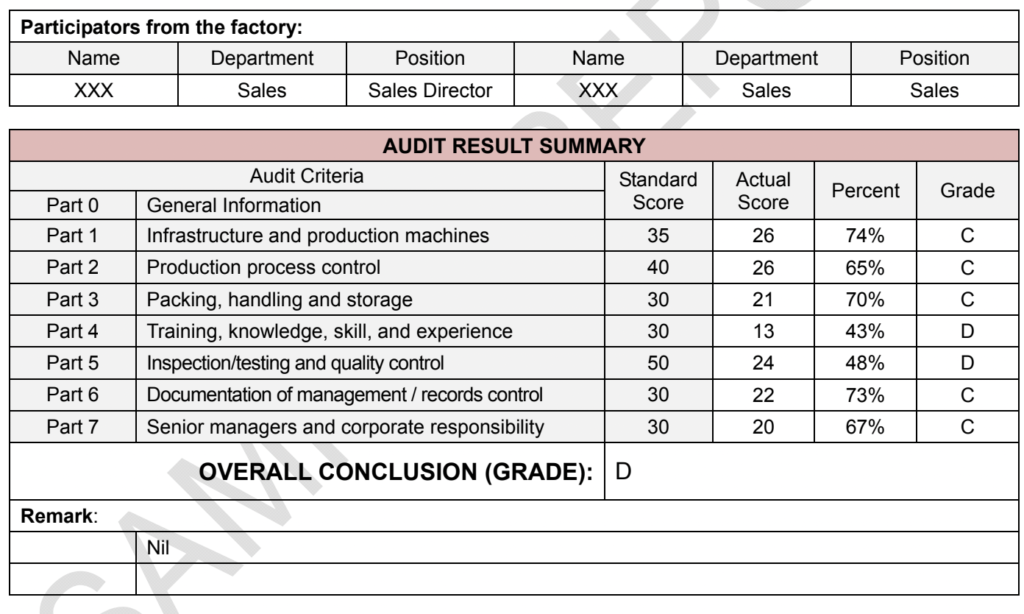India has a long history of manufacturing. The country has in recent years become a sought-after destination for companies looking to diversify their supply chain.
Despite having hundreds of years’ experience of producing textiles, hardwoods, and other goods, there are still many challenges that buyers must take into account while sourcing from the country.
In this guide, we’ll explore why you should consider sourcing from India, how you can find reliable suppliers and tips for successful quality control practices.
The Indian Manufacturing Landscape
India’s manufacturing sector is versatile and plays an increasingly important role in the country’s economic growth. Recently, the country has initiated the “Make In India” program, with the goal of developing the country into a center for manufacturing. This initiative concentrates on a few industries such as Automobile and Components, Construction, Chemicals, Electronic Systems, Textile, Renewable Energy, and others. Click here to read more about each sector.
But what really sets India apart from other countries is that its manufacturing landscape comprises various regions specialised in producing different types of products and its manufacturing clusters.
North India: The Region for Textiles, Automotive Parts, and Heavy Machinery
Northern India is today home to many traditional industries, including textiles. However, in recent years, the region has also experienced a booming automotive and heavy machinery manufacturing industry. For instance, companies like Maruti Suzuki, Hero MotoCorp, Honda Motorcycle, and Scooter India have all production units in this region.
Key Manufacturing Cities in North India:
- Ludhiana, Punjab (textile)
- Gurgaon, Haryana (automotive)
- Faridabad, Haryana (industrial products and machinery)
West India: The Region for Chemicals, Petrochemicals, and Pharmaceuticals
The western region of India has gained recognition for its production of chemicals, petrochemicals, and pharmaceuticals. Additionally, the city of Mumbai serves as the headquarters for several major pharmaceutical corporations and is a hot stop for textile and garments.
Key Manufacturing Cities in West India:
- Vadodara, Gujarat (chemical and machine tools)
- Mumbai, Maharashtra (textile, pharmaceuticals and petrochemicals)
- Pune, Maharashtra (automotive)
- Ahmedabad, Gujarat (textile)
East India: The Region for Steel, Coal, and Tea
The eastern part of India is known for its steel, coal, and tea industries due to its natural resources and historical development. For example, the climate and soil conditions in this region makes it ideal for growing tea.
Key Manufacturing Cities in East India:
- Ranchi, Jharkhand (coal mining, handicraft, textile)
- Jamshedpur, Jharkhand (steel)
- Guwahati, Assam (tea, petroleum)
South India: The Region for Electronics, Textiles, and Automotive Parts
The electronics manufacturing industry in India’s southern part has experienced a rapid growth in recent years. As much as so that Bangalore has been widely recognised as the “Silicon Valley of India” due to its high concentration of software and electronics firms. Apart from this, the region is renowned for its automotive industry and production of textiles.
Key Manufacturing Cities in South India:
- Bangalore, Karnataka (computer and electronics)
- Chennai, Tamil Nadu (automotive and hardware)
- Coimbatore, Tamil Nadu (textile)
What are the Benefits of Sourcing Products from India?
India has become a prime destination for sourcing products due to its diverse industries, highly skilled workforce, and large population. In this section, we’ll look into some of the key benefits that companies can enjoy when sourcing products from India.
1. Cost-Effectiveness
One of the advantages of sourcing from India is its affordability. Unsurprisingly, the country has a skilled workers who can produce goods at lower prices than many in many other manufacturing countries. With China’s wages now nearly comparable to those in some EU countries and forecasts for its wages to continue growing, India is increasingly looking attractive for those businesses that are price sensitive.
2. Products and Suppliers
Given India’s large manufacturing industry and its sheer size, it comes with no surprise that you can find virtually any product category from many Indian suppliers. The country has something to offer for everyone, from textiles and handicrafts to machinery and electronics for almost every product type.
3. English Proficiency
The country is home to English-speaking people. This makes it easier to communicate with suppliers, compared to those in China or Vietnam who may be less proficient in English.
4. Trade Agreements
The country has in recent years signed several bilateral free trade agreements, including the India-UAE CEPA, India Africa Trade Agreement, and Ind-Aus-ECTA. Companies present in the countries with bilateral agreements can take advantage of it to reduce their costs. Read more about the FTA here.
What are the Challenges of Sourcing from India?
Like any other sourcing destination, sourcing products from India can also come with certain challenges. Below are some of the difficulties that you may encounter when sourcing from India.
1. Quality Control
Although there are plenty of Indian manufacturers that are fully capable of producing goods of high quality, maintaining consistent quality standards can at times be challenging. In comparison to its counterparts in China, the Indian suppliers tend to have less advanced technology and less standardisation of their process, making inconsistency more prevalent.
2. Fewer Selection of Suppliers
In comparison to China, there are fewer product categories that you as a buyer can choose from. Aside from that, many suppliers in the country have limited online presence. This can especially make it challenging to find suppliers that match your requirement and difficult to compare prices and quality, without being present in the country.
How to Find Suppliers in India: Identifying and Selecting Suppliers
Finding a supplier in India may work differently than in other countries, especially since many have a poor online presence.
- Online Directories: India has a few online directories, such as IndiaMART and MadeinIndia. However, be aware that suppliers listed on IndiaMART may not have an export license as it caters more to the domestic market.
- Trade Shows: Another great way to find suppliers is to meet them face-to-face at offline events. For example, the Federation of Indian Exporters Organization arranges buyer-meet events and attends exhibitions worldwide. There are also plenty of big trade shows in India, including the Delhi Spring and Autumn Fair, where you can meet potential suppliers and see their products firsthand.
- Associations: Associations plays a big role in the Indian manufacturing industry. Businesses that are association members are usually larger, may have better established quality control practices and experience working with foreign buyers.
How to Manage Quality Control in India?
It’s important to prioritise quality control when sourcing from India, especially as consistency can be a challenge. Below, we’ll look at two cost-effective ways to manage quality control in India.
Factory Audit in India
A supplier or factory audits in India is a cost-effective way to mitigate the risk of engaging with illegitime businesses and non-compliance with quality requirements. By conducting a factory audit, you can identify risks associated with the supplier or factory – before making a deposit.
At AQM BD, our supplier audits cover the following major checkpoints:
- Company legality information
- Bank information
- Human resources
- Exportation capability
- Order management
The standard factory audit in AQM BD includes:
- Manufacturer’s background
- Manpower
- Production capability
- Machine, facilities, and equipment
- The manufacturing process and production line
- An in-house quality system, such as testing and inspection
- Management system and capability
- Environment

Example: Factory Audit report.
Inspection Companies in India
Another important step in managing quality control is conducting on-site inspections of the products before they’re shipped to you. Inspection companies in India like AQM BD can help you identify issues such as non-compliance with quality standards, poor manufacturing practices, and inadequate equipment. Our inspectors inspect the products based on defined AQL standards and criteria, such as:
- Dimensions
- Quantity verification
- Style, colour, and documentation
- Workmanship and visual inspection
- Shipping mark and packaging
These product inspections in India can be performed at any stage during the production cycle, ranging from before production, during production, pre shipment to container/loading inspections. While the latter, pre shipment inspection in India is the most popular.

Example: Inspection Sample Report
Conclusion: Sourcing from India: A Guide for Buyers
India has become a sought-after manufacturing country due to its affordability, English proficiency, and large-scale manufacturing industries. However, while the country offers advantages, quality control can be challenges. To mitigate risks, two effective steps include auditing your supplier to ensure its legitimacy and inspecting their products to ensure the products conform to your specifications.
With over a decade of experience in quality inspections and audits, AQM BD has a strong presence across India with local inspectors available. If you need guidance on quality control practices for your next sourcing project in India, do not hesitate to contact us today.





